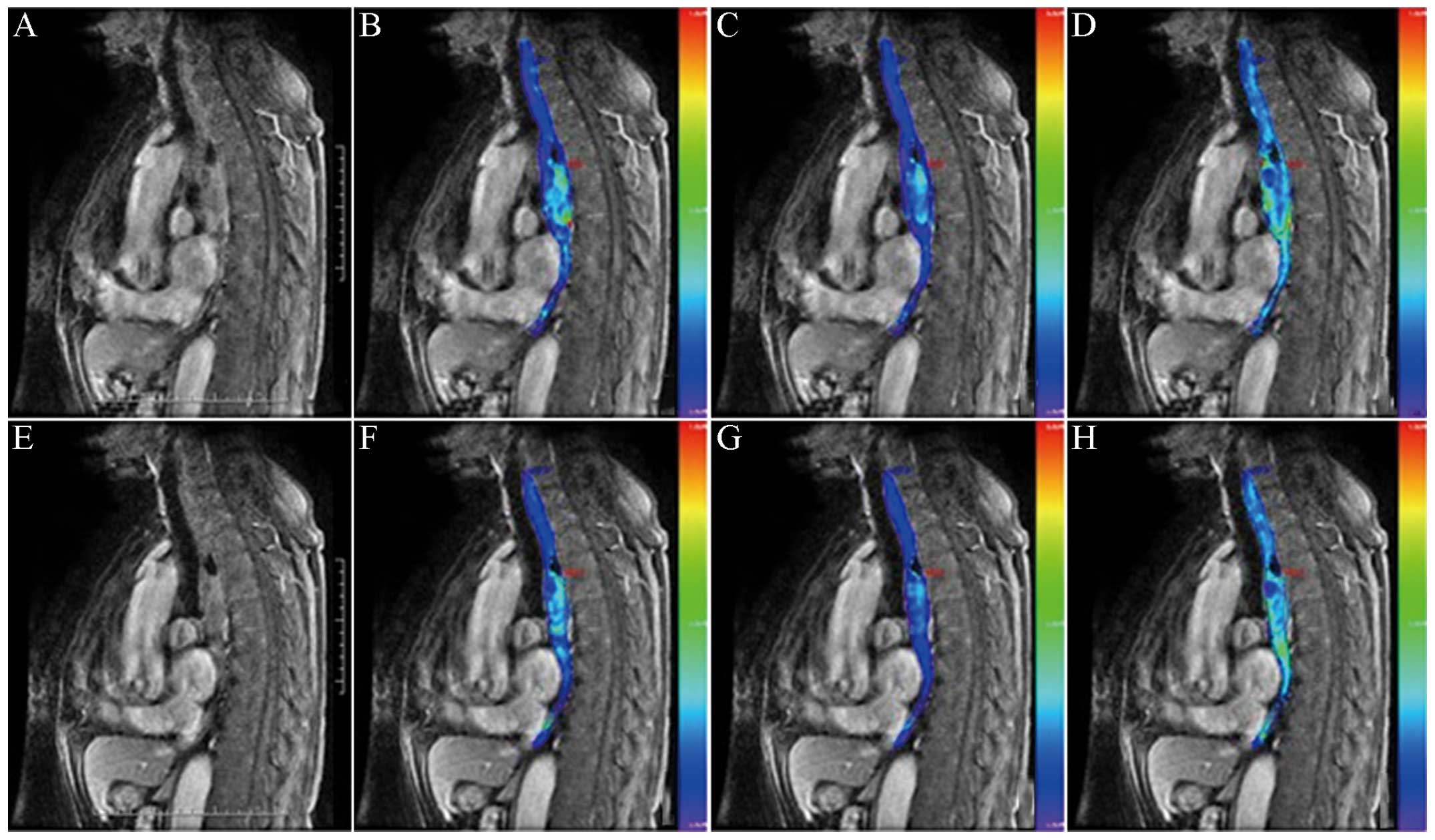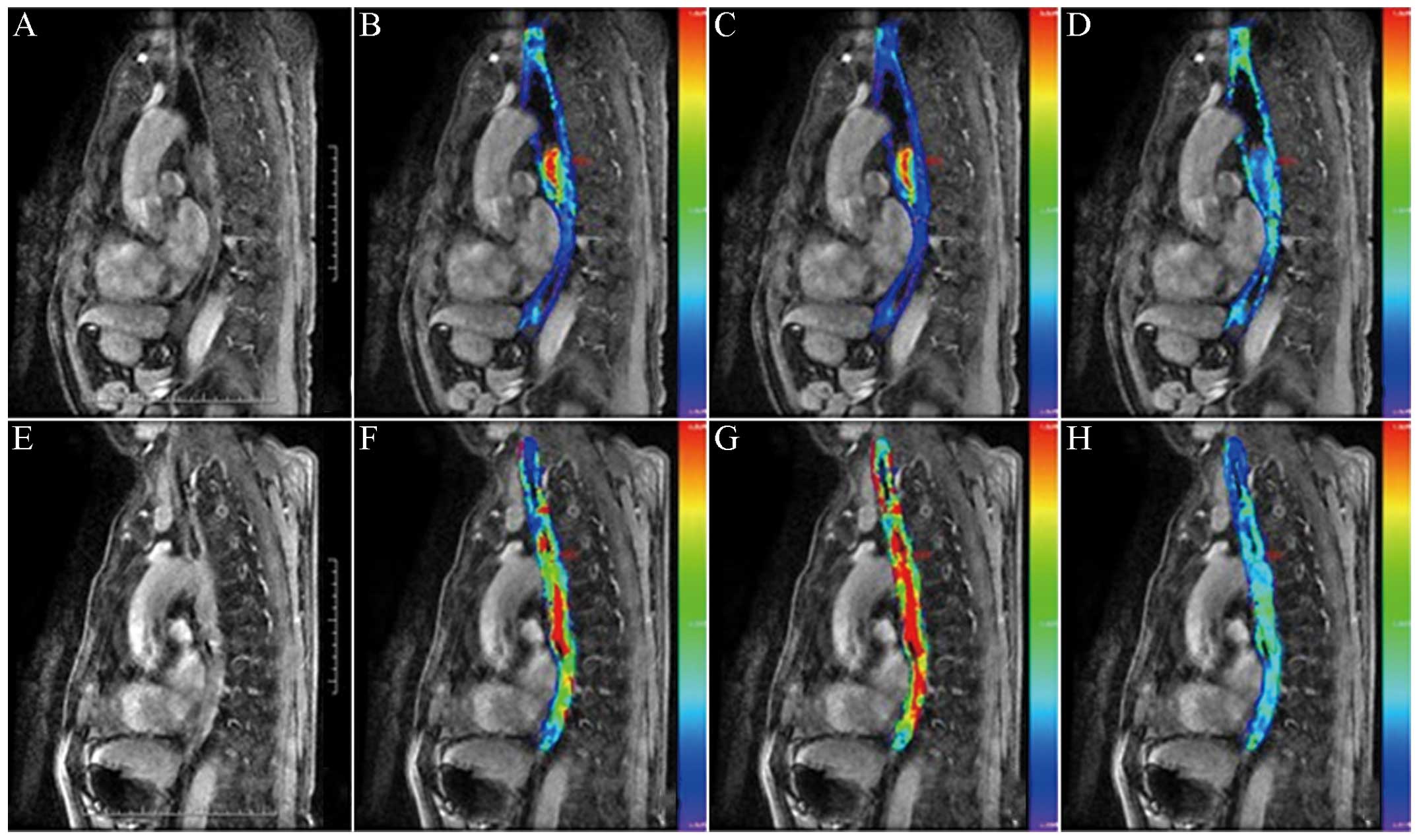|
1
|
Ferlay J, Shin HR, Bray F, Forman D,
Mathers C and Parkin DM: Estimates of worldwide burden of cancer in
2008: GLOBOCAN 2008. Int J Cancer. 127:2893–2917. 2010. View Article : Google Scholar : PubMed/NCBI
|
|
2
|
Domper Arnal MJ, Ferrández Arenas Á and
Lanas Arbeloa Á: Esophageal cancer: Risk factors, screening and
endoscopic treatment in Western and Eastern countries. World J
Gastroenterol. 21:7933–7943. 2015.PubMed/NCBI
|
|
3
|
He J and Shao K: The epidemiology, current
status of management, challenge and future strategy for esophageal
cancer in China. Zhong Guo Ai Zheng Za Zhi. 21:501–504. 2011.(In
Chinese).
|
|
4
|
Haefner MF, Lang K, Krug D, Koerber SA,
Uhlmann L, Kieser M, Debus J and Sterzing F: Prognostic factors,
patterns of recurrence and toxicity for patients with esophageal
cancer undergoing definitive radiotherapy or chemo-radiotherapy. J
Radiat Res. 56:742–749. 2015. View Article : Google Scholar : PubMed/NCBI
|
|
5
|
Wong RK and Malthaner R: Withdrawn.
Combined chemotherapy and radiotherapy (without surgery) compared
with radiotherapy alone in localized carcinoma of the esophagus.
Cochrane Database Syst Rev. 1:CD0020922010.PubMed/NCBI
|
|
6
|
Lu WB, Yu JP, Ni XC, Wang J, Jin JH, Deng
LH, Deng JZ, Sun ZQ and Sun SP: Relation between tumor pathologic
response to concurrent chemo-radiotherapy and changes of serum VEGF
level and its influence on the efficacy and prognosis in patients
with esophageal carcinoma. Zhong Hua Fang She Yi Xue Yu Fang Hu Za
Zhi. 33:299–302. 2013.(In Chinese).
|
|
7
|
Beierle EA, Strande LF and Chen MK: VEGF
upregulates Bcl-2 expression and is associated with decreased
apoptosis in neuroblastoma cells. J Pediatr Surg. 37:467–471. 2002.
View Article : Google Scholar : PubMed/NCBI
|
|
8
|
Tofts PS, Brix G, Buckley DL, Evelhoch JL,
Henderson E, Knopp MV, Larsson HB, Lee TY, Mayr NA, Parker GJ, et
al: Estimating kinetic parameters from dynamic contrast-enhanced
T(1)-weighted MRI of a diffusable tracer: Standardized quantities
and symbols. J Magn Reson Imaging. 10:223–232. 1999. View Article : Google Scholar : PubMed/NCBI
|
|
9
|
Oberholzer K, Pohlmann A, Schreiber W,
Mildenberger P, Kunz P, Schmidberger H, Junginger T and Düber C:
Assessment of tumor microcirculation with dynamic contrast-enhanced
MRI in patients with esophageal cancer: Initial experience. J Magn
Reson Imaging. 27:1296–1301. 2008. View Article : Google Scholar : PubMed/NCBI
|
|
10
|
Eisenhauer EA, Therasse P, Bogaerts J,
Schwartz LH, Sargent D, Ford R, Dancey J, Arbuck S, Gwyther S,
Mooney M, et al: New response evaluation criteria in solid tumours:
Revised RECIST guideline (version 1.1). Eur J Cancer. 45:228–247.
2009. View Article : Google Scholar : PubMed/NCBI
|
|
11
|
Cortés González R and Villaseñor Caloca R:
Esophageal cancer. Rev Gastroenterol Mex. 62:149–159. 1997.(In
Spanish). PubMed/NCBI
|
|
12
|
Greer SE, Goodney PP, Sutton JE and
Birkmeyer JD: Neoadjuvant chemoradiotherapy for esophageal
carcinoma: A meta-analysis. Surgery. 137:172–177. 2005. View Article : Google Scholar : PubMed/NCBI
|
|
13
|
Al-Sarraf M, Martz K, Herskovic A,
Leichman L, Brindle JS, Vaitkevicius VK, Cooper J, Byhardt R, Davis
L and Emami B: Progress report of combined chemoradiotherapy versus
radiotherapy alone in patients with esophageal cancer: An
intergroup study. J Clin Oncol. 15:277–284. 1997.PubMed/NCBI
|
|
14
|
Yoon DH, Jang G, Kim JH, Kim YH, Kim JY,
Kim HR, Jung HY, Lee GH, Song HY, Cho KJ, et al: Randomized phase 2
trial of S1 and oxaliplatin-based chemoradiotherapy with or without
induction chemotherapy for esophageal cancer. Int J Radiat Oncol
Biol Phys. 91:489–496. 2015. View Article : Google Scholar : PubMed/NCBI
|
|
15
|
Shin SU, Lee JM, Yu MH, Yoon JH, Han JK,
Choi BI, Glaser KJ and Ehman RL: Prediction of esophageal varices
in patients with cirrhosis: Usefulness of three-dimensional MR
elastography with echo-planar imaging technique. Radiology.
272:143–153. 2014. View Article : Google Scholar : PubMed/NCBI
|
|
16
|
Jia ZZ, Zhang J, Tang WJ, Wu XH, Gu HM,
Geng DY and Chen XR: Assessing the microvascular permeability of
brain glioma by DCE-MRI. Zhong Guo Yi Xue Ji Suan Ji Cheng Xiang Za
Zhi. 19:293–297. 2013.(In Chinese).
|
|
17
|
Esposito A, Palmisano A, Maffi P, Malosio
ML, Nano R, Canu T, De Cobelli F, Piemonti L, Ironi G, Secchi A and
Del Maschio A: Liver perfusion changes occurring during pancreatic
islet engraftment: A dynamic contrast-enhanced magnetic resonance
study. Am J Transplant. 14:202–209. 2014. View Article : Google Scholar : PubMed/NCBI
|
|
18
|
He W, Liu Y, Liu JY and Lu M: Prostate
cancer: Diagnostic value of quantitative analysis by dynamic
contrast-enhanced MR at 3.0 T. Zhong Hua Fang She Xue Za Zhi.
48:215–218. 2014.(In Chinese).
|
|
19
|
Zhao LY, Zhang RZ, Zhou CW, Li J and Wang
L: Quantitative dynamic contrast enhanced MR in the prediction of
response in breast cancer patients undergoing neoadjuvant
chemotherapy. Zhong Hua Fang She Xue Za Zhi. 47:704–708. 2013.(In
Chinese).
|
|
20
|
Chang EY, Li X, Jerosch-Herold M, Priest
RA, Enestvedt CK, Xu J, Springer CS Jr and Jobe BA: The evaluation
of esophageal adenocarcinoma using dynamic contrast-enhanced
magnetic resonance imaging. J Gastrointest Surg. 12:166–175. 2008.
View Article : Google Scholar : PubMed/NCBI
|
|
21
|
Padhani AR, Hayes C, Assersohn L, Powles
T, Makris A, Suckling J, Leach MO and Husband JE: Prediction of
clinicopathologic response of breast cancer to primary chemotherapy
at contrast-enhanced MR imaging: Initial clinical results.
Radiology. 239:361–374. 2006. View Article : Google Scholar : PubMed/NCBI
|
|
22
|
George ML, Dzik-Jurasz AS, Padhani AR,
Brown G, Tait DM, Eccles SA and Swift RI: Non-invasive methods of
assessing angiogenesis and their value in predicting response to
treatment in colorectal cancer. Br J Surg. 88:1628–1636. 2001.
View Article : Google Scholar : PubMed/NCBI
|
|
23
|
Akisik MF, Sandrasegaran K, Bu G, Lin C,
Hutchins GD and Chiorean EG: Pancreatic cancer: Utility of dynamic
contrast-enhanced MR imaging in assessment of antiangiogenic
therapy. Radiology. 256:441–449. 2010. View Article : Google Scholar : PubMed/NCBI
|
|
24
|
Hahn OM, Yang C, Medved M, Karczmar G,
Kistner E, Karrison T, Manchen E, Mitchell M, Ratain MJ and Stadler
WM: Dynamic contrast-enhanced magnetic resonance imaging
pharmacodynamic biomarker study of sorafenib in metastatic renal
carcinoma. J Clin Oncol. 26:4572–4578. 2008. View Article : Google Scholar : PubMed/NCBI
|
















